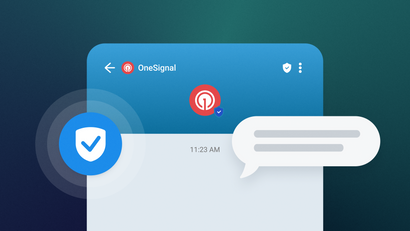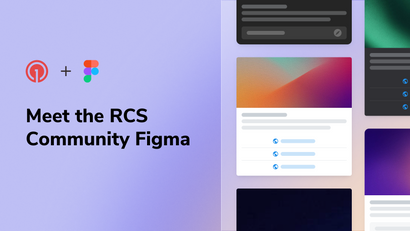As digital communication completes its shift towards a more holistic approach to customer engagement, OneSignal has had the privilege of maintaining a front-row view of emerging trends along the way. Based on a recent marketing awareness survey, we’ve surfaced some telling customer engagement insights that indicate exactly how much progress (and stagnation) marketers are experiencing on the road to omnichannel success.
Big picture? Marketers are optimizing the value of existing, reliable communication channels while simultaneously acknowledging critical gaps in their data utilization and omnichannel execution.
These trends paint a fascinating picture of a marketing ecosystem that has identified the need to evolve its engagement strategy but is stuck in the second half of that transformation when it comes to execution.
Mobile Marketing Trend #1: A Heavier Investment in Email
In no world would email qualify as an “emerging trend,” however, we truly see this as a case of finding newfound value in a historically reliable (and affordable) channel. So much so that 62% of marketers today plan to invest in email as a marketing channel in the future.
Email’s ability to deliver personalized and targeted messaging at scale makes it a rather effective foundation for omnichannel customer communication — especially in an era where hyper-relevance is critical for quality engagement. Furthermore, email provides measurable results through detailed analytics, enabling marketers to track performance, optimize campaigns, and demonstrate ROI with precision.
In 2024, email's role is further amplified by its seamless integration with other channels. As businesses aim to create cohesive customer journeys, email serves as a central hub that ties various touchpoints together. Whether nurturing leads through custom recommendations, re-engaging inactive app users, or complementing push notifications and SMS, this interconnectedness ensures consistent messaging across all platforms.
Fortunately, many email providers offer sophisticated builders and automations, allowing for real-time personalization and record-setting open rates. As a result, email continues to evolve as a cornerstone in achieving an omnichannel messaging approach, helping businesses improve the customer experience and drive sustained engagement.
Don’t reinvent the wheel, just make the one you already have faster.
Mobile Marketing Trend #2: Many Are Still Stuck With a First-Party Data Blind Spot
Marketers face increasing challenges in collecting third-party data due to heightened privacy regulations, such as GDPR (General Data Protection Regulation) and CCPA (California Consumer Privacy Act), along with the phasing out of third-party cookies by major browsers. These changes have significantly limited the availability and reliability of third-party data, altering how marketers go about tracking user behavior across different channels and platforms.
So why are a third of companies still not utilizing first-party data to personalize messaging?
This is a tough one to pin down without having full insight into specific data collection capabilities, but it is most likely due to one of the following reasons:
- Many companies may not have the necessary tools or systems in place to collect, manage, and analyze first-party data effectively.
- A lack of expertise to leverage data for personalization.
- Organizational silos hinder the integration of data across different departments, making it difficult to create a unified view of the customer.
- Concerns about data privacy and compliance with stringent regulations may make companies hesitant to fully utilize first-party data.
- Lastly, some companies might not fully understand the value of personalization or how to implement it effectively, leading to missed opportunities in their marketing strategies.
First-party data has become more crucial than ever for marketers aiming to maintain a competitive edge through personalized and relevant customer engagement. First-party data, collected directly from customer interactions with a brand's own channels (such as websites, apps, and emails), is not only more reliable but also more compliant with privacy regulations. This data allows marketers to build detailed customer profiles and deliver highly personalized experiences tailored to individual preferences and behaviors — a recipe for sustained retention rates.
Mobile Marketing Trend #3: The Omnichannel Roadblock
Throwing the term “omnichannel engagement” around is all well and good, but implementation isn’t always so slick. According to our marketing awareness survey, these are the top omnichannel marketing challenges businesses face in 2024:
- A lack of access to the right data
- Inefficiencies between switching platforms for different channels
- Dependence on engineering tech teams
- Inability to orchestrate messaging across multiple channels
- Inability to target the right audience
Integrating new tools efficiently is hard enough as it is and a disjointed data landscape only hampers consistent, personalized messaging. This often leads to operational inefficiencies and dependency on technical teams, drastically slowing down strategy execution. To compound problems, organizational misalignment further complicates matters, as conflicting priorities among departments hinder the orchestration of a cohesive strategy. It’s a mess that many marketers are a little too intimate with.
These roadblocks only highlight the need for businesses to invest in robust data management solutions, foster cross-departmental collaboration, and most importantly, stay agile in adapting to technological advancements and regulatory changes. Addressing these challenges, sooner rather than later, is crucial for companies to achieve a seamless and effective omnichannel engagement strategy.
Mobile Marketing Trend #4: Most Marketers Are Ready For a Change in Engagement
Believe it or not, 88% of marketers are considering switching customer engagement platforms this year. Why the mass migration?
One major reason is the need for better integration. As businesses adopt omnichannel strategies, the ability to seamlessly integrate various communication channels into a single platform becomes more and more crucial. Many existing platforms lack the sophistication required to handle this integration efficiently, prompting marketers to seek alternatives for a more unified approach to customer engagement. Additionally, advancements in technology have introduced new features and tools that offer enhanced personalization, automation, and analytics capabilities, which many older platforms do not support.
Another driving force behind this migration is the increasing demand for improved user experience and support. Marketers are looking for platforms that are not only more intuitive and easier to use but also come with robust customer support and documentation. A change in engagement solutions is made all the more enticing by the natural competitive landscape. New and improved platforms have emerged that offer more competitive pricing, flexible customization options, and innovative features that better align with businesses' evolving needs.
Speaking of a Better Engagement Solution…
OneSignal was built by app developers who foresaw the need for a more cohesive way to communicate with their users. One in every five apps now uses OneSignal to craft, analyze, and automate their mobile messaging strategy.
Today we offer push, in-app, email, SMS, and Live Activity support with the sophistication marketers and developers need to keep their engagement efforts on the right track. We encourage you to try us out for free and let us help you stay ahead of future omnichannel trends.
Get Started for Free



